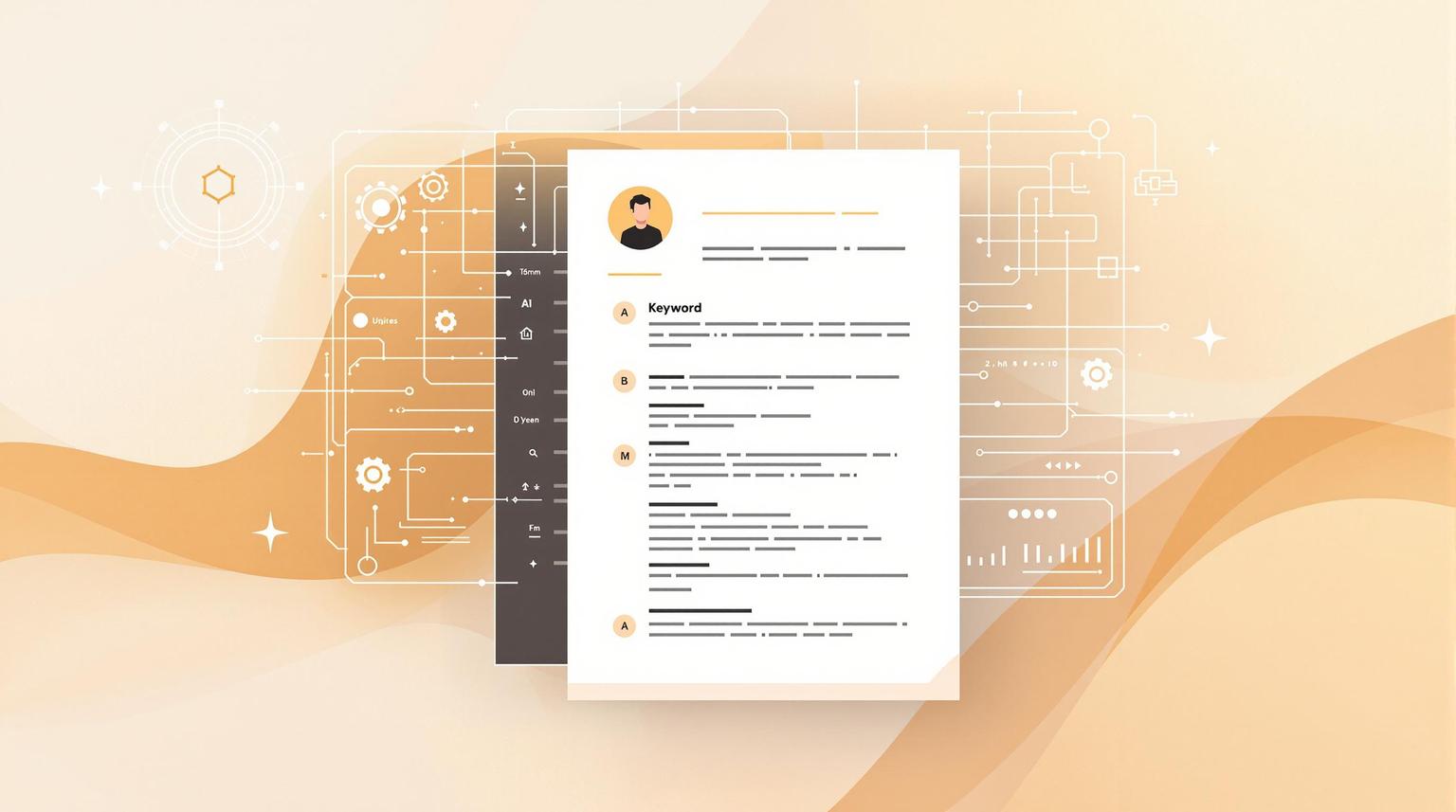AI-powered coding interview simulators are transforming how developers prepare for technical interviews. Here's why they matter:
- Practice Anytime: Simulators are available 24/7, letting you practice on your schedule.
- Real-Time Feedback: Get instant analysis of your code, including syntax, performance, and readability tips.
- Adaptive Difficulty: Problems adjust to your skill level, targeting areas where you need improvement.
- Interview Simulation: Mimics real interview conditions with interactive AI interviewers, follow-up questions, and communication feedback.
- Video and Audio Tools: Helps you refine your on-camera presence and speaking skills for remote interviews.
- Affordable Options: Many platforms are low-cost or free, making top-tier prep accessible to everyone.
Key Results:
- 63% of users improved performance.
- 92% of regular users landed job offers within 3 months.
- Over 500,000 candidates have secured top roles using these tools.
AI coding simulators are fast, accessible, and effective. While they can't fully replace human-led coaching, they are a powerful addition to your interview prep toolkit.
How to Practice Mock Interviews with AI
Main Features of AI Coding Interview Simulators
AI coding interview simulators bring a fresh approach to how developers prepare for technical interviews. These tools go beyond basic practice exercises, offering immersive environments that closely mimic real interview settings.
Browser-Based Coding Environments
Today's AI simulators feature browser-based IDEs, removing the hassle of local setup. These environments support a variety of programming languages, including Python, JavaScript, C++, and Java, so you can work in the language you're most comfortable with.
They come packed with useful features like autocomplete, syntax highlighting, and error detection, all within a single workspace. Integrated terminals let you perform tasks like installing packages, managing version control, running command-line tools, and even importing projects from GitHub. This setup mirrors the workflows you'd encounter on the job. Tools like bracket highlighting further enhance the experience, making it feel like you're working in a professional-grade editor.
Collaboration is another key feature. Many platforms allow for pair programming sessions, so you can practice coding with a partner or simulate team-based interview scenarios. This is especially helpful for interviews where you'll need to collaborate with potential colleagues.
These comprehensive coding environments naturally tie into another standout feature - real-time feedback on your performance.
Immediate Feedback and Code Analysis
One of the biggest advantages of AI simulators is the real-time feedback they provide. The system evaluates your code as you type, flagging syntax errors, suggesting algorithm improvements, and offering tips to make your code cleaner and more efficient.
This instant feedback speeds up the learning process. Instead of waiting until you've submitted your solution to find out what went wrong, you can spot and fix issues immediately. The AI doesn't just check if your solution works - it also evaluates how well it performs, how readable it is, and whether it aligns with industry standards.
The impact of this feature is clear. 78% of users reported increased confidence after just five mock interview sessions, and 92% of those who practiced regularly (three or more times per week) landed job offers within three months. Alex, a recent computer science graduate, shared:
"The AI-powered mock interviews were a game-changer for me. They allowed me to practice at any time, and the detailed feedback helped me identify and correct mistakes I didn't even know I was making".
In addition to analyzing your code, these platforms provide step-by-step guidance when you hit a roadblock. The AI can break down complex problems, offer hints, and explain the reasoning behind solutions. This ensures you're not just memorizing answers but truly understanding the concepts.
Dynamic Problem Difficulty Adjustment
AI simulators are also exceptional at customizing your practice through adaptive difficulty. They analyze your performance to recommend problems suited to your skill level. Unlike static problem sets, these platforms adjust in real time to keep you challenged without overwhelming you.
The system tracks various metrics - like how quickly you solve problems, common mistakes, and areas where you struggle - and uses this data to fine-tune the difficulty. For example, if you're excelling at array problems but struggling with dynamic programming, the AI will gradually introduce more complex dynamic programming challenges while ensuring you continue to strengthen your array skills.
This adaptive approach mirrors real interviews, where questions often evolve based on your responses. Studies show that AI-driven behavioral analysis can achieve accuracy rates above 85% in evaluating candidate performance.
The personalization doesn't stop there. These platforms pull from extensive libraries of questions inspired by real technical interviews at top companies. Instead of following a fixed sequence, the system selects problems that target your specific development areas. This tailored approach ensures you're practicing the exact types of problems you're likely to encounter in an interview.
Traditional coding tests stick to static question sets, but AI simulators deliver dynamic and personalized testing experiences. By continuously calibrating the difficulty, they provide a more accurate measure of your abilities while creating the ideal environment for growth.
How AI Recreates Interview Conditions
AI coding interview simulators excel at mimicking the real-world pressure and dynamics of technical interviews. They go beyond basic coding exercises, replicating not only the technical challenges but also the interpersonal and communication aspects of an actual interview. This creates a more holistic preparation experience.
AI Interviewer Conversations
These simulators act as virtual interviewers, engaging in realistic, interactive conversations throughout your coding session. Instead of merely presenting problems and waiting for solutions, the AI actively participates by asking follow-up questions, challenging your reasoning, and requesting explanations of your approach.
For example, during a task, the AI might ask, "Can you explain your thought process?" or "What is the time complexity of your solution?" This mirrors the real-world interview environment, where you're expected to code while articulating your reasoning. The system can adjust its questioning style to simulate different interviewer personalities, preparing you for a variety of scenarios.
The AI also tailors its questions to your role, industry, and experience level. If you're interviewing for a senior software engineering role at a fintech company, expect questions on topics like scalability, security, and handling financial data. Beyond coding, the AI provides real-time feedback on your responses, highlighting areas for improvement, such as eliminating filler words or refining your phrasing. This dual focus on coding and communication helps sharpen the verbal skills critical for technical interviews.
The conversational flow feels natural, with contextual follow-up questions that push you to think on your feet. For instance, if you mention using a specific data structure, the AI might ask why you chose it or challenge you to optimize your solution under a new constraint. This back-and-forth helps you practice defending your technical decisions in real time.
To further enhance the experience, advanced video and audio features replicate the conditions of remote interviews.
Video and Audio Practice Features
Modern AI tools incorporate video and audio capabilities to simulate the growing trend of remote interviews. These features help ensure that your on-camera presence and communication skills are as polished as your technical abilities.
With recorded practice sessions, you can review how you present yourself, articulate ideas, and manage nervous habits. Real-time transcription during sessions allows for later analysis of your responses. The AI pinpoints areas for improvement, such as speaking too fast, overusing filler words, or failing to clearly explain your reasoning. For instance, one project manager using VMock discovered he spoke too quickly and adjusted his pace to better clarify his role during an actual interview.
Audio analysis takes this a step further by evaluating your tone, pace, and clarity. The system offers suggestions to help you sound more confident and professional. This comprehensive approach ensures you're well-prepared for both technical and communication challenges.
The benefits of these immersive features are clear. Statistics show that 93% of applicants experience interview anxiety at some point. Practicing in realistic video and audio environments helps build familiarity and confidence, reducing stress. Additionally, only 14% of developers believe whiteboard interviews accurately reflect real job tasks. By rehearsing in conditions that closely resemble actual interviews, you'll feel more prepared for any format you encounter.
sbb-itb-96bfd48
Benefits and Drawbacks of AI Coding Interview Simulators
AI coding interview simulators have reshaped how developers prepare for technical interviews. They bring a mix of advantages and limitations, and understanding these can help you use them effectively in your preparation. Let's dive into the trade-offs and how they fit into a balanced strategy for interview readiness.
Benefits and Drawbacks Comparison
Here’s a quick breakdown of the key strengths and challenges of AI coding interview simulators:
| Benefits | Drawbacks |
|---|---|
| On-Demand Practice: Available 24/7, letting you practice whenever it suits your schedule | Limited Human Nuance: Struggles to evaluate creativity, cultural fit, and deeper critical thinking |
| Cost-Effective: Generally cheaper than hiring a coach or attending human-led mock interviews | Technical Glitches: AI can get stuck in loops or repeat questions, which can be frustrating |
| Instant Feedback: Provides real-time analysis of your code | Generic Feedback: May lack the depth and subtlety of feedback from an experienced human coach |
| Time Savings: Can cut down up to 95% of the time spent in traditional interview prep | Data Privacy Concerns: 84% of job seekers worry about their data, image, and voice being used improperly |
| Measurable Improvement: Users have reported up to a 70% improvement in problem-solving skills after using these tools | Repetitive Simulations: Scenarios can feel repetitive and may not fully replicate real interview dynamics |
| Personalized Learning Paths: Uses intelligent algorithms to create tailored questions and track readiness |
For example, statistics show that 60–75% of GitHub Copilot users report less coding anxiety and productivity boosts of 17–43%. However, there’s a flip side: 89% of job seekers feel AI falls short in assessing soft skills, and 87% prefer human-led initial interviews.
While AI simulators are often more affordable than human coaching, premium features can still come at a steep monthly cost. Over-relying on these tools may also hinder the development of critical interpersonal and adaptive skills.
Another concern is privacy. Many users are uneasy about how their data might be used, and AI systems trained on biased datasets may struggle to interpret subtle differences in responses. Offline systems add to the challenge by being unable to update or verify content in real time.
Ultimately, AI coding interview simulators work best as part of a blended strategy. While they excel in structured practice and measurable progress, they can’t fully replace the nuanced feedback or adaptability of human interaction. McKinsey estimates that AI could automate up to 30% of recruitment hours by 2030, but the human touch will remain essential. By combining AI tools with traditional methods, you can create a more comprehensive and effective approach to interview preparation.
Conclusion: How AI Changes Technical Interview Preparation
AI-powered coding interview simulators are reshaping how job seekers in the United States prepare for technical interviews. These tools make high-quality preparation accessible to everyone, eliminating the exclusivity of expensive coaching programs.
Over 500,000 candidates have already landed top roles using these simulators. By 2025, experts estimate that nearly half of all interviews will incorporate AI to improve fairness and efficiency in the hiring process. This growing trend makes it essential for job seekers to understand and navigate AI-driven tools.
What sets these simulators apart is their ability to provide realistic practice sessions paired with instant, data-driven feedback. Unlike traditional methods that rely on fixed schedules or limited availability, AI tools adapt to each individual's pace and learning preferences. They evaluate coding skills and communication abilities, offering immediate insights that help candidates improve continuously. This blend of real-time feedback and personalized learning is revolutionizing the way people prepare for interviews.
Another advantage is affordability. Many platforms offer free or low-cost options, ensuring that quality preparation is no longer reserved for those with bigger budgets. This accessibility allows skilled developers from all walks of life to compete for top-tier positions.
These tools also help reduce interview-related stress. By offering tailored feedback on details like tone, speaking pace, and clarity, AI platforms enable candidates to refine not just their technical skills but also their overall interview presence.
"AI-driven interview platforms have been shown to enhance performance by providing immediate, data-driven feedback, leading to better preparation and results." - Laura M. Labovich
With features like adaptive problem sets and interactive feedback, these simulators are redefining what it means to be technically ready. While they work best when paired with traditional preparation and human guidance, AI tools provide a faster, more accessible way to prepare for technical interviews. For job seekers in the U.S., these platforms offer a significant advantage in an increasingly competitive tech job market.
FAQs
How do AI coding interview simulators match problem difficulty to my skill level?
AI coding interview simulators are designed to assess your performance on the fly, using smart algorithms to tweak the difficulty of questions as you go. They usually begin with a standard-level question and then evaluate how you handle it - looking at things like how accurate your solution is, how quickly you solve it, and the methods you use. Based on that analysis, the simulator adjusts the next set of challenges to match your skill level.
This real-time adjustment keeps the questions balanced - not too simple to be unhelpful and not so tough that they feel impossible - allowing you to practice efficiently and gain the confidence you need for coding interviews.
What advantages do AI-powered simulators offer for coding interview preparation?
AI-powered simulators bring a host of advantages to coding interview prep. One standout feature is their ability to provide real-time, personalized feedback. This helps candidates pinpoint weaknesses and work on them immediately, streamlining the process of improvement. These tools also replicate real-world problem-solving scenarios, giving users a taste of what actual interviews feel like. This not only boosts confidence but also sharpens essential skills.
What sets AI simulators apart from traditional methods is their ability to adjust to individual learning styles. This creates a more customized and effective preparation process. Plus, they offer consistent, scalable practice sessions, which means candidates can prepare efficiently without the added stress of guessing what might come up in an interview.
How do AI coding simulators protect my personal data and ensure privacy during practice sessions?
AI coding simulators take your data privacy seriously by implementing strict security measures. They generally avoid retaining sensitive details, such as your practice session logs or personal information, beyond what's essential for the tool to function smoothly. To further safeguard your data, these platforms often rely on advanced encryption methods and secure handling practices, ensuring protection against unauthorized access.
In addition, many of these tools align with established data protection laws, offering users a transparent and responsible approach to managing their information. This commitment allows you to focus on sharpening your coding skills without worrying about privacy risks.


